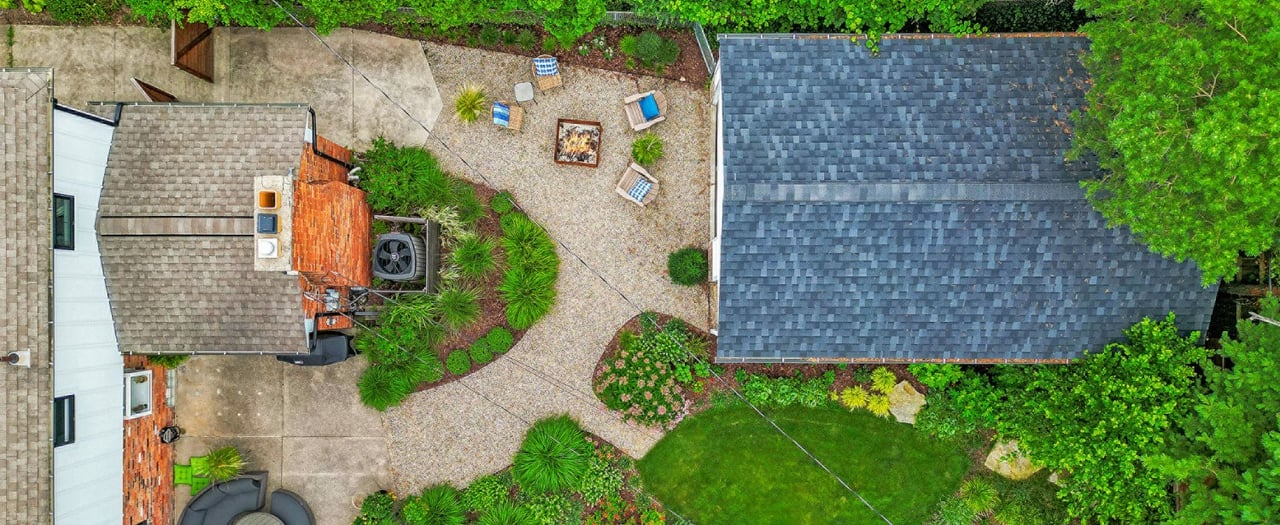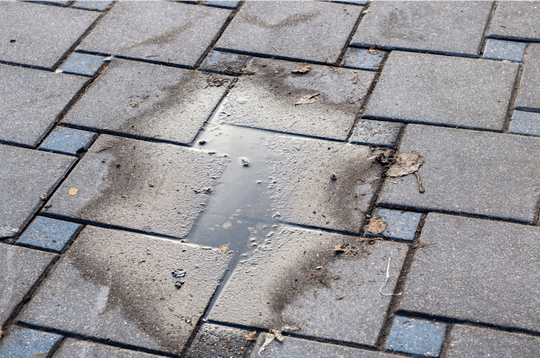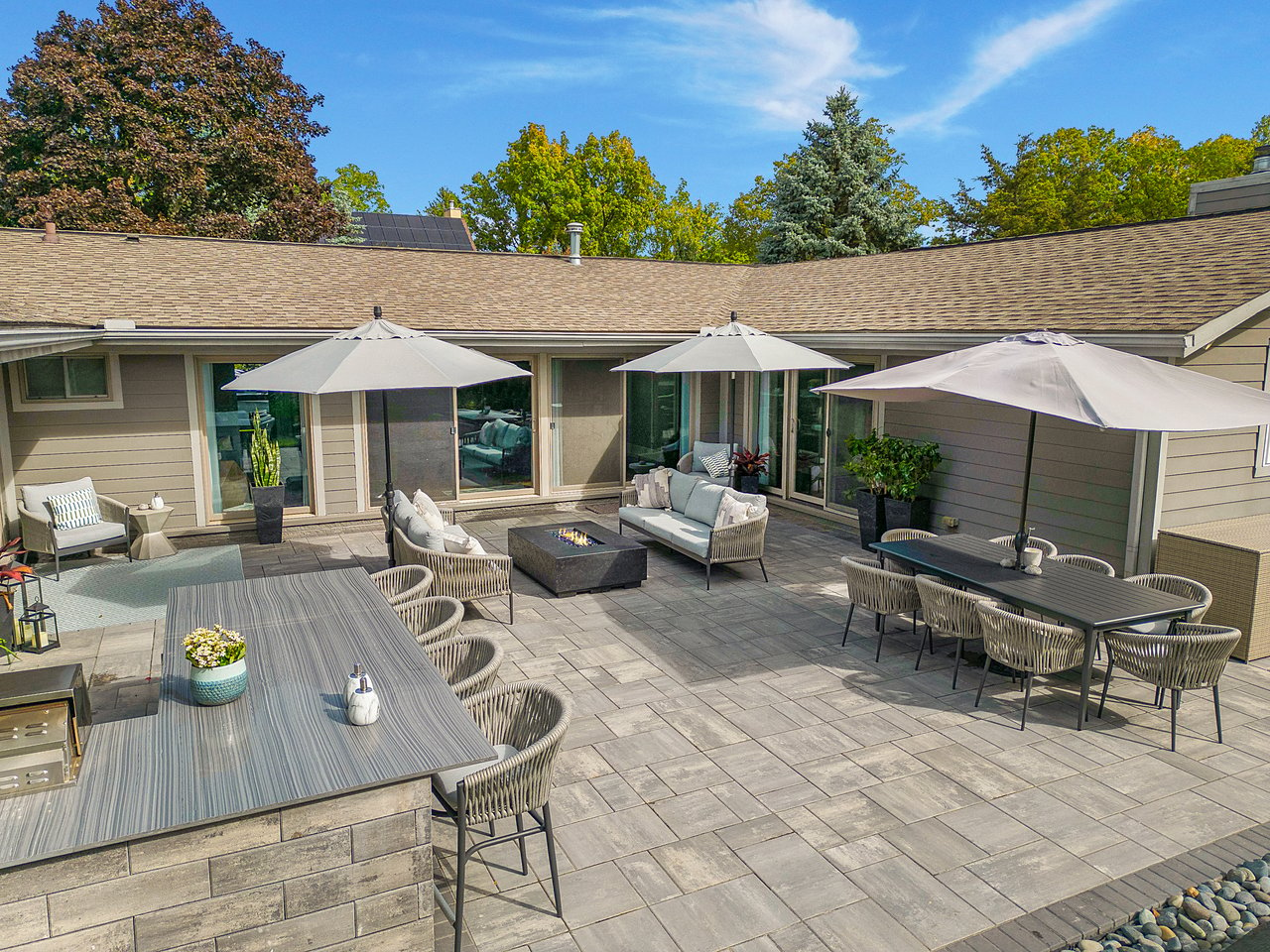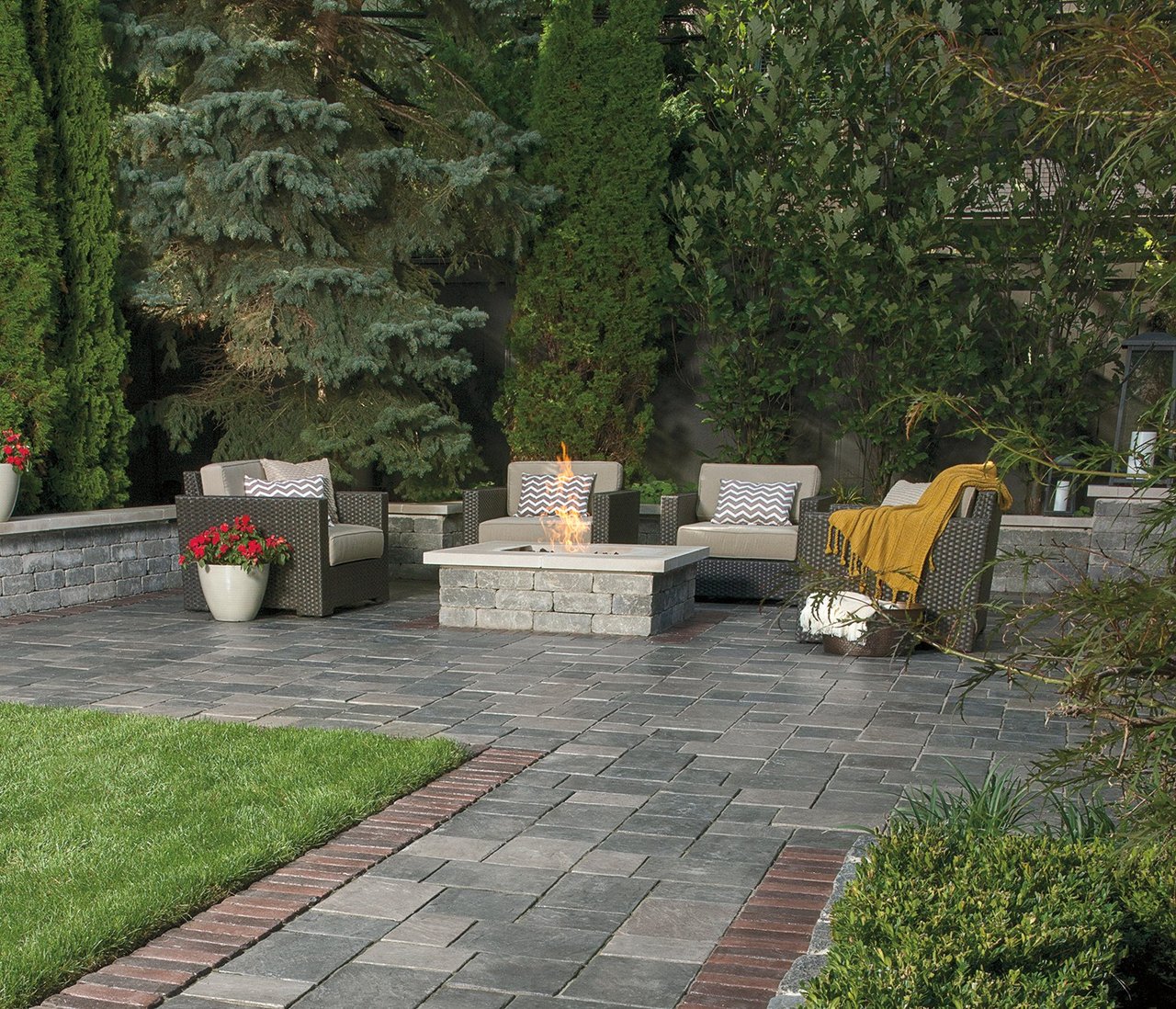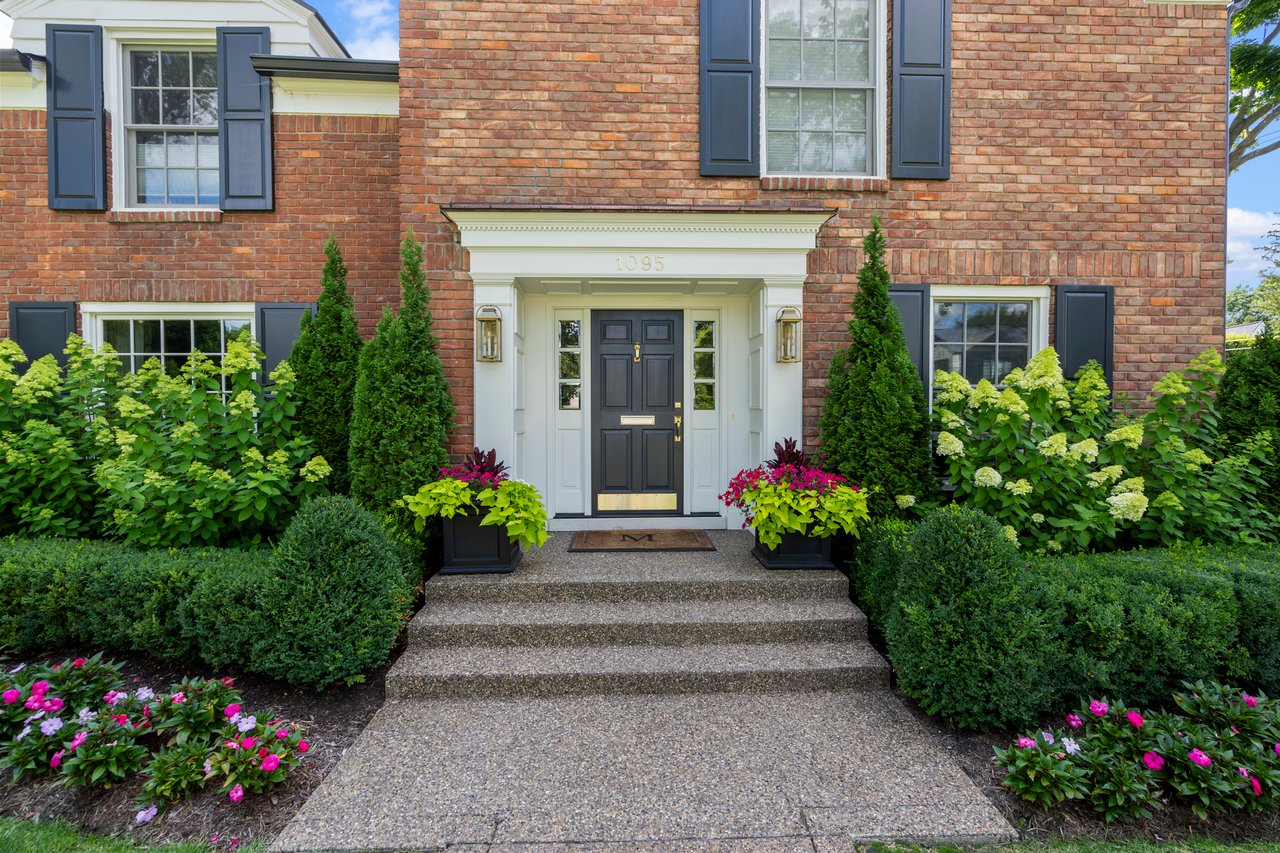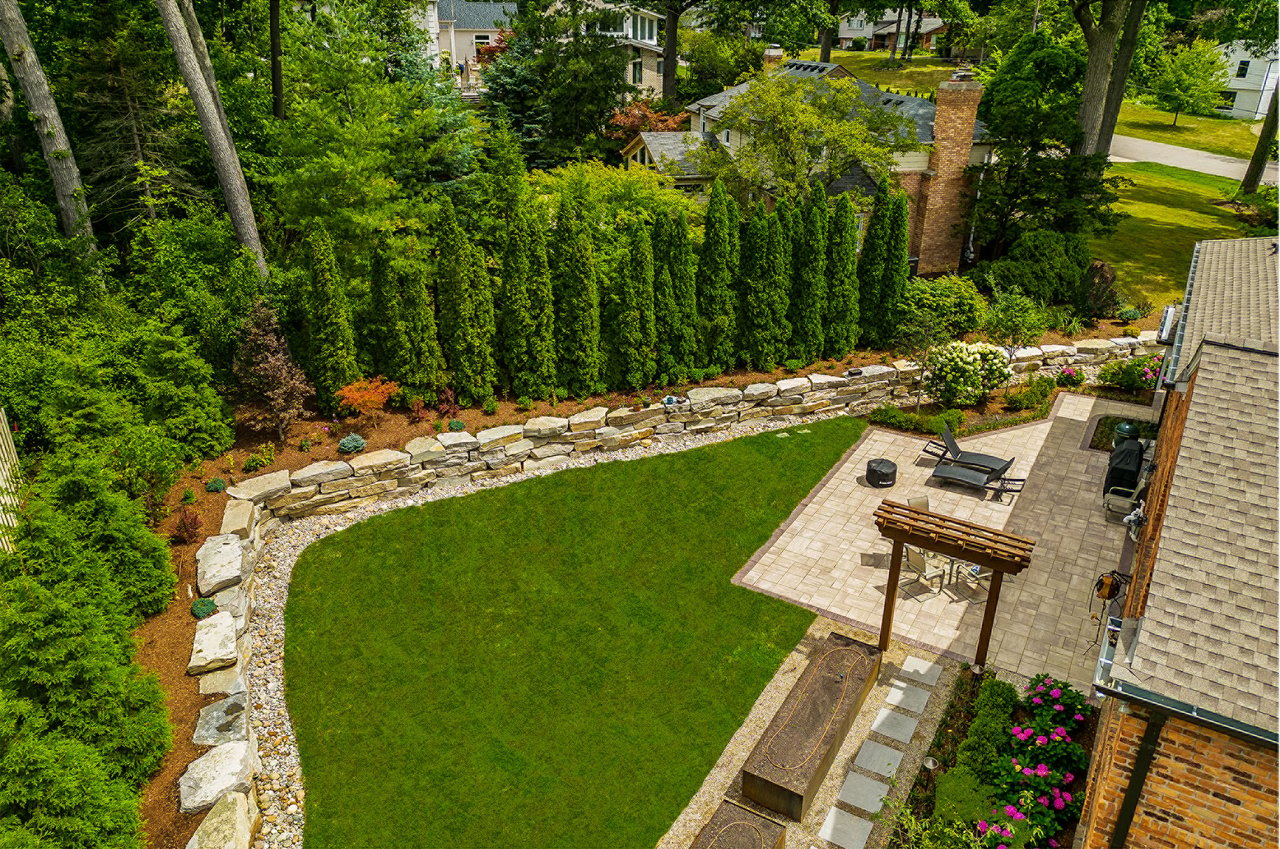
Signs You Need a Retaining Wall & How It Can Improve Your Landscape
Great Lakes Landscape Design August 5, 2025

Great Lakes Landscape Design August 5, 2025
While a sloped yard can offer stunning views and unique character, it can also present significant challenges. For example, water runoff can turn your prized garden into a muddy mess, soil erosion can threaten your home’s very foundation, and the lack of a level area can make your yard feel unusable for recreation and relaxation. The good news is that there’s one simple solution to all of these problems: a retaining wall.
While it’s known for holding back tons of soil, managing water flow, and preventing catastrophic erosion, it can also add structure, depth, and immense value to your property. If you’ve been struggling with a sloped yard, you will want to speak with the team at Great Lakes Landscape Design about how a retaining wall could protect your landscape and provide new possibilities for gardens, patios, and play areas.
Do you need a retaining wall installation? Check out these top signs that a retaining wall might be the solution you’ve been looking for:
Do you notice soil and mulch constantly washing away from your flower beds after a heavy rain? Are you seeing small gullies or channels forming on a hillside? Does dirt consistently spill over onto your driveway, walkways, or patio, requiring constant sweeping? These are all classic signs that you have an erosion problem and need a retaining wall.
While a little bit of displaced soil might seem like a minor annoyance, unchecked erosion can lead to severe consequences. As the nutrient-rich topsoil is washed away, your lawn and plants are starved of the essential elements they need to thrive, leading to bare patches and unhealthy vegetation. More alarmingly, this gradual loss of earth can destabilize the entire slope. Over time, the ground supporting trees, sheds, or even your home’s foundation can be compromised.
A retaining wall physically holds the soil in place and stops the erosive power of water in its tracks. When designed by a professional, a retaining wall system includes critical drainage components, such as a gravel backfill and weep holes or perforated pipes to allow water to safely pass through the area without taking your valuable soil with it. Overall, by stopping erosion, a retaining wall protects your property’s integrity and preserves the health and beauty of your landscape.
Your property might be large, but if most of it is on a steep grade, its functional size is significantly smaller. Have you ever felt like planting a garden was a pointless exercise since everything would wash down the hill anyway? Or has it been driving you crazy that there’s nowhere to set up a patio table, a playset for your kids, or a pergola? Don’t let the limitations of a hill or sloped yard prevent you from enjoying your landscape. Consider installing a retaining wall.
By strategically installing one or more retaining walls, you can reshape a difficult slope into a series of flat, usable terraces. Each terrace becomes a distinct and functional space in your outdoor living area, dramatically increasing your property’s utility and aesthetic appeal. One level could be used for a spacious patio, while another could house a series of raised garden beds, making it easy to grow your own vegetables and flowers.
Soil expands and contracts with moisture, and on a sloped lot, the force of gravity is constantly pushing soil and water against your home’s foundation. This relentless force, known as lateral earth pressure, can be immense. Over time, you may notice cracks forming on your foundation walls or interior drywall, windows and doors beginning to stick, or water seeping into your basement or crawlspace after it rains. Ignoring these signs you need a retaining wall can lead to catastrophic structural failure and incredibly expensive repairs.
Installing a retaining wall a short distance away from your home can save its foundation. The wall intercepts the downhill pressure from the soil and water before it ever reaches your house. When paired with a proper drainage system, it redirects water that would otherwise saturate the soil around your foundation, preventing the buildup of hydrostatic pressure that is a primary cause of leaks and cracks.
Your driveway, patio, and walkways are only as stable as the ground they are built on. If you have a driveway that runs alongside a downward slope, you may notice the soil at the edge beginning to crumble and fall away. Over time, this erosion can creep under the pavement, creating a void. Without proper support, the asphalt or concrete can crack, sink, or even collapse. The same is true for walkways and patios that are situated on or near a slope.
A retaining wall built along the edge of a driveway or walkway provides the necessary lateral support to keep the underlying soil base intact. It creates a strong, stable edge that prevents erosion and ensures your hardscapes remain level and secure for decades to come.
If any of these problems sound familiar, you could benefit from a professionally designed and installed retaining wall. And our team at Great Lakes Landscape Design is just the one to help with this!
With over 35 years of experience constructing hardscape features throughout the Detroit Metro area, we can design a retaining wall that not only solves your structural and drainage issues but also blends seamlessly into your landscape, adding depth, beauty, and tremendous value. No matter if you like the rustic charm of natural stone walls or prefer the clean lines of pre-cast concrete blocks, you can trust us to provide a solution that extends your usable living space and acts as a beautiful focal point in your landscape design.
Unlock the full potential of your property by contacting Great Lakes Landscape Design in Detroit, MI. We look forward to transforming your space using nature and innovative solutions.


